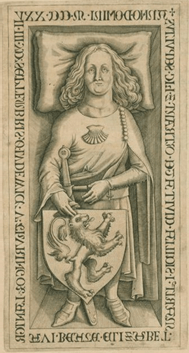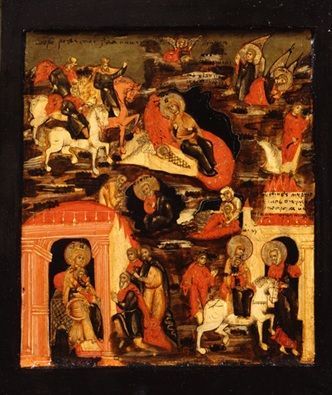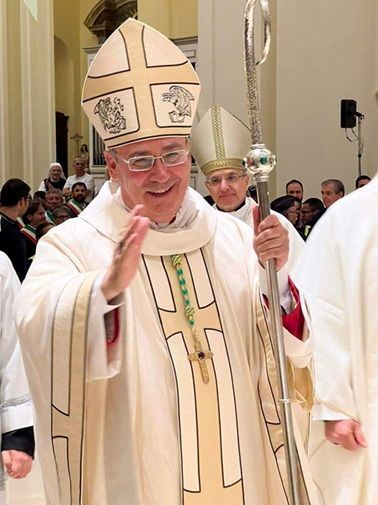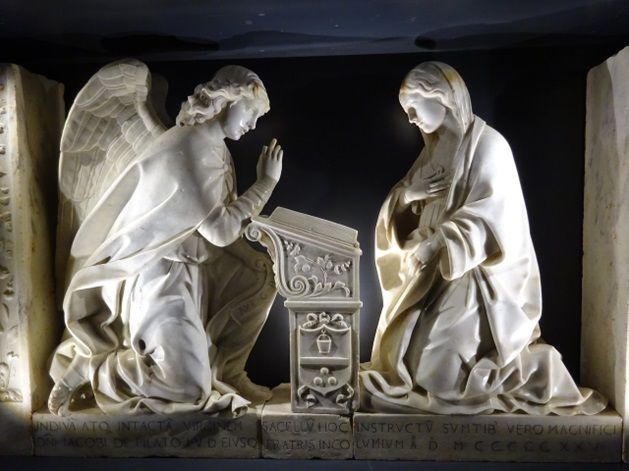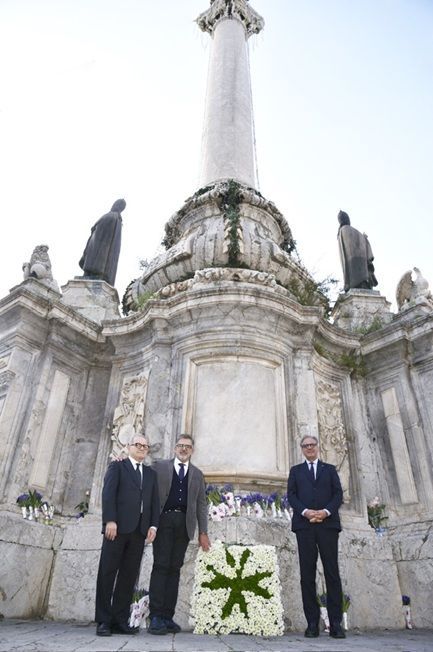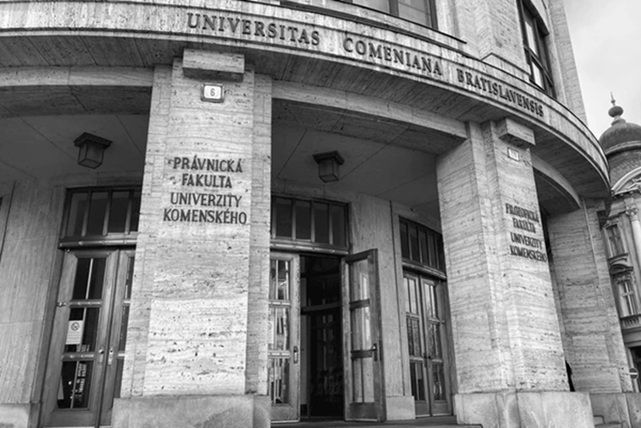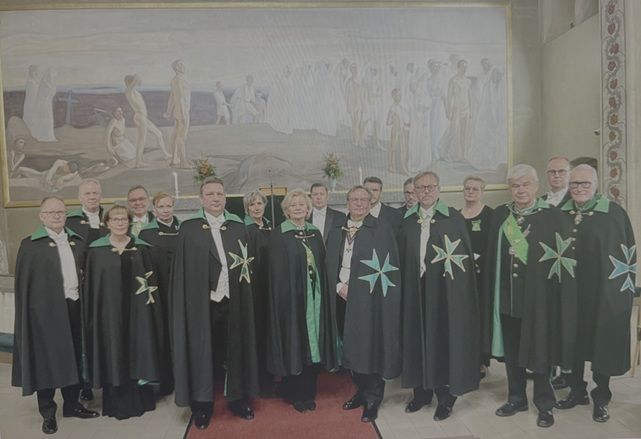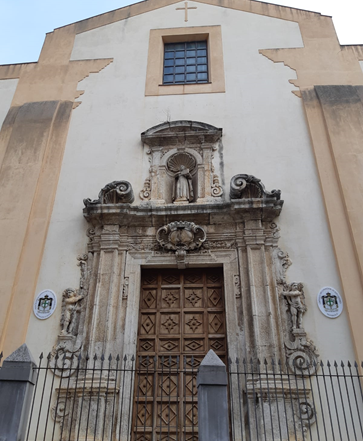800 ANNI DI PRESENZA DELL’ORDINE DI SAN LAZZARO DI GERUSALEMME IN GERMANIA
800 ANNI DI PRESENZA DELL’ORDINE DI SAN LAZZARO DI GERUSALEMME IN GERMANIA
(Disegno della lastra tombale di Ludovico IV di Turingia conservata nel monastero di Reinhardsbrunn)
Il prossimo 28 e 29 luglio 2023 il Gran Baliato di Germania celebrerà a Gotha, alla presenza del Gran maestro, gli 800 anni di storia dell’Ordine di San Lazzaro di Gerusalemme in Germania.
Come nel XII secolo Luigi VII, tornato dalle crociate, con la donazione di Boigny aveva creato le basi per un insediamento dei Lazzariti nel suo regno, anche l’imperatore della casata degli Hohenstaufen, Federico II, forte della sua esperienza in Terrasanta, diede il suo contributo allo sviluppo dell’Ordine in Italia. Lo stesso fenomeno si verificò nei territori imperiali di lingua tedesca vanno fatte risalire a donazioni effettuate da reduci delle crociate.
La città di Schlatt, nell'odierno Baden-Württemberg, fu uno dei nuclei dell'Ordine in Germania, già menzionato nello statuto di Seedorf del 1321, la più antica regola dell'Ordine ancora esistente.
L’insediamento a Gotha, in Germania, nel 1223, nacque da una donazione del langravio di Turingia il Ludovico IV (mai formalmente canonizzato ma oggetto da sempre di culto popolare con il nome di Ludovico il Santo, con celebrazione della memoria l’11 settembre) e di sua madre Sofia di Baviera, nella prima decade del XIII secolo. Su richiesta di sua moglie, Santa Elisabetta, papa Gregorio IX il 21 febbraio 1229 ordinò all’arcivescovo di Magonza Siegfried II di permettere ai confratelli dell’Ordine di San Lazzaro del lebbrosario di Gotha di innalzare una cappella, costruire un proprio cimitero e nominare un cappellano.
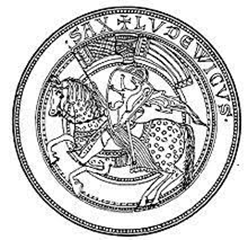
Sigillo di Ludovico IV di Turingia
Questo ha portato alla fondazione della prima commenda nella Germania centrale, seguita da altre fondazioni a Wackenhausen, Braunsroda, Breitenbich e Sangershausen. Nell'area del Reno-Meno, la commenda di Megersheim, a sud-ovest di Francoforte, era stata istituita fin dalla metà del XIII secolo e fu talvolta sede del Maestro dell'Ordine.
Il 28 marzo 1489 papa Innocenzo VIII emise la bolla “Nos igitur”, che prescriveva l’unificazione dell’Ordine con i canonici del Santo Sepolcro e i Giovanniti.
Gli effetti del decreto papale rimasero limitati ai territori germanofoni in cui i possedimenti dei Lazzariti passarono all’Ospedale di San Giovanni.
All’epoca della Riforma, poi, le ultime case dei Lazzariti vennero abolite.

(Il principe Federico Vittorio e la consorte Margherita Carola di Sassonia)
Dopo la riorganizzazione dell'Ordine nel primo quarto del XX secolo, il numero dei membri crebbe anche in Germania nel 1935 fu formalmente ripristinata la sua presenza in territorio tedesco con la fondazione di un Gran Priorato in Germania sotto il governo di S.A.R. Federico Vittorio Principe di Hohenzollern-Sigmaringen, di fede cattolica.
Oggi l’Ordine di San Lazzaro è presente in Germania con un Gran Baliato.
800 YEARS OF PRESENCE OF THE ORDER OF ST. LAZARUS OF JERUSALEM IN GERMANY
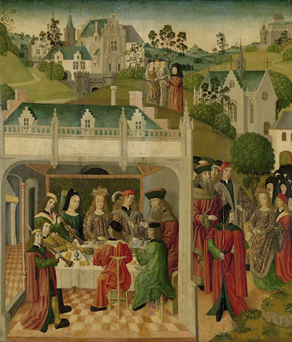
(Inside left wing of an altarpiece depicting the wedding feast of St Elisabeth and Louis of Thuringia at the Wartburg, Master of Saint Elizabeth Panels c. 1490 - c. 1495)
On 28 and 29 July 2023, the Grand Bailiwick of Germany will celebrate in Gotha, in the presence of the Grand Master, the 800th anniversary of the Order of St. Lazarus of Jerusalem in Germany.
Just as in the 12th century Louis VII, having returned from the Crusades, had created the basis for a settlement of the Lazarites in his kingdom with the donation of Boigny, so too did the emperor of the House of Hohenstaufen, Frederick II, on the strength of his experience in the Holy Land, contribute to the development of the Order in Italy. The same phenomenon occurred in the German-speaking imperial territories due to donations made by veterans of the Crusades.
The town of Schlatt, in today's Baden-Württemberg, was one of the Order's nuclei in Germany, already mentioned in the Statute of Seedorf of 1321, the oldest surviving rule of the Order.
The settlement in Gotha, Germany, in 1223, stemmed from a donation by the landgrave of Thuringia, Ludwig IV (never formally canonised but always the object of popular worship under the name of Ludwig the Saint, with the celebration of the memory on 11 September) and his mother Sophia of Bavaria, in the first decade of the 13th century. At the request of his wife, St Elisabeth, Pope Gregory IX ordered the archbishop of Mainz Siegfried II on 21 February 1229 to allow the brethren of the Order of St Lazarus of the leper colony in Gotha to erect a chapel, build their own cemetery and appoint a chaplain.
This led to the foundation of the first commandery in central Germany, followed by other foundations in Wackenhausen, Braunsroda, Breitenbich and Sangershausen. In the Rhine-Main area, the commandery of Megersheim, south-west of Frankfurt, had been established since the middle of the 13th century and was sometimes the seat of the Master of the Order.
On 28 March 1489, Pope Innocent VIII issued the bull 'Nos igitur', which prescribed the unification of the Order with the Canons of the Holy Sepulchre and the Johnites.
The effects of the papal decree remained limited to the German-speaking territories where the Lazarites' possessions passed to the Hospital of St. John.
At the time of the Reformation, the last houses of the Lazzarites were abolished.
After the reorganisation of the Order in the first quarter of the 20th century, the number of members also grew in Germany in 1935 its presence was formally re-established on German territory with the foundation of a Grand Priory in Germany under the rule of H.R.H. Frederick Victor Prince of Hohenzollern-Sigmaringen, of the Catholic faith.
Today the Order of St Lazarus is present in Germany with a Grand Bailiwick.

